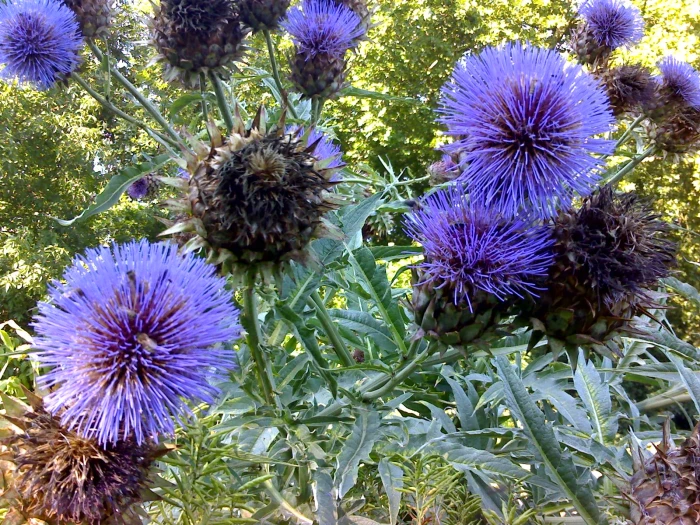Cardoon
(Cynara cardunculus)
Cardoon (Cynara cardunculus)
/
/

BuzzWoof
Public domain






























































Estimated Native Range
Climate Requirements for Round Lake Beach, Illinois
| This Plant | Your Site | Plant Suitability for Your Location | ||
|---|---|---|---|---|
| • Precipitation | 1" - 77" | 35" | Aquatic | Aquatic |
| • High Temp. | 24°F - 106°F | 82°F | Your summer temperatures are normal for this plant. | Excellent |
| • Low Temp. | 14°F - 65°F | 11°F | Your winter temperatures may be too cold for this plant | Too cold |
Summary
Cardoon is cultivated for its ornamental and culinary uses, with the stalks being a traditional vegetable in Mediterranean cuisine. It is also appreciated by gardeners for its drought tolerance once established and its ability to adapt to a range of soil types, although it prefers well-drained soils. Full sun is essential for optimal growth, and while it can handle some frost, severe cold may kill the plant or cause it to resprout from the base. The plant requires ample space due to its size and has spineless cultivars that are preferred for easier handling. Potential problems include susceptibility to artichoke plume moth and slugs, especially in damp conditions.CC BY-SA 4.0
Plant Description
- Plant Type: Herb
- Height: 3-6 feet
- Width: 2-3 feet
- Growth Rate: Moderate
- Flower Color: Blue, Pink, Purple
- Flowering Season: Fall
- Leaf Retention: Evergreen
Growth Requirements
- Sun: Full Sun
- Water: Medium
- Drainage: Slow, Medium, Fast
Common Uses
Bee Garden, Bird Garden, Border Plant, Butterfly Garden, Deer Resistant, Drought Tolerant, Edible*Disclaimer: Easyscape's listed plant edibility is for informational use. Always verify the safety and proper identification of any plant before consumption., Fragrant, Hummingbird Garden, Potted Plant, Showy Flowers, Street Planting
Natural Habitat
Native to Mediterranean grasslands, riparian zones, and scrub areas
Other Names
Common Names: Spanish Artichoke, Artichoke, Artichoke Thistle, Scotch Thistle, Scottish Thistle, Globe Artichoke, Kardone, Gemüseartischocke, Artischocke, Alcachofa
Scientific Names: Cynara cardunculus, Cynara cardunculus var. altilis, Cynara cardunculus var. inermis, Cynara cardunculus var. cardunculus, Cynara cardunculus var. elata, Cynara cardunculus var. sativa, Cynara cardunculus var. sylvestris, Cynara scolymus subsp. cardunculus, Cynara sylvestris
GBIF Accepted Name: Cynara cardunculus L.